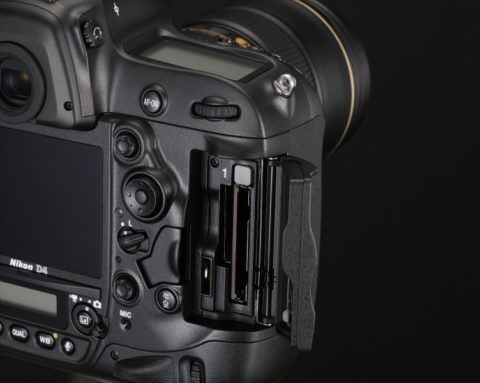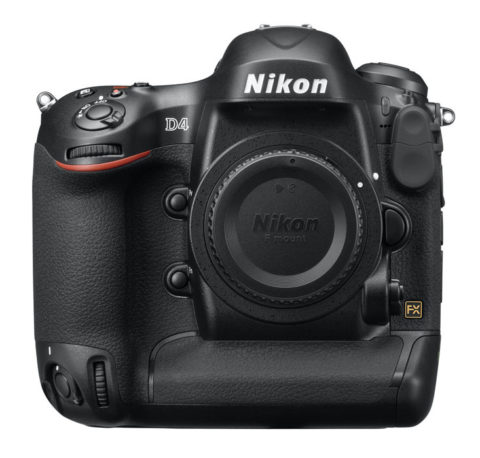Nikon Announces the D4
I’m not a Nikon shooter, but the inevitable Nikon envy always is fun. Never mind from a cool technology point of view keeping tabs on the latest and greatest is just plain fun as well. With that said, this isn’t a hands on review of the D4, or anything of the sort, but I did want to throw my 2¢ out there since it was just released.
The era of really expensive pro cameras
Whether it’s the sagging US economy, a stronger Japanese one, or the camera companies simply got the idea in their head that photographers are made out of gold, the prices on pro bodies, and lenses, have been going up each generation, not down.
Canon’s pro line previously was split between the $4000 1D and the $8000 1Ds, now they’ve been unified into a single $7000 1Dx. Likewise Nikon’s pro sports bodies have been marking upwards from the ~$4000 D3, to the $5000 D3s, to the new $6000 D4.
The question in my mind is do the cameras warrant these steadily growing prices?
As electronic devices, the costs of the electrical components should be coming down. CPUs, RAM, and integrated circuits in general, have gotten smaller and as a side effect of that cheaper. Even the sensors themselves, should be getting slightly less expensive—though they don’t obey Moore’s law the way most electronics do.
Even then, it’s clear that a FX sized sensor can be manufactured at a cost that makes a $2000 camera profitable.
So what gives?
On the other hand, these cameras are singularly more capable than any previous generation camera. The D4 expands Nikon’s useable ISO range out to ISO 50 to 204,000—though I’ll be coming back to this in a bit. In addition, you can always think of costs in terms of film; with a 400,000 frame shutter, it’s reasonable to consider the camera to be worth at least 11,112 36-exposure rolls of film, or ~$166,000 give or take in film costs and processing.
Either way, it seems like the age of cheaper pro cameras has temporally come to a close.
Crazy ISOs
At least on the pro end, it seems like the megapixel wars are finally over, the new battle ground appears to be for ISO supremacy.
Nikon originally set the bar for high ISO performance with the D3, back in 2007, and has continued to hold the hold that crown unchallenged since then. In the mean time both Canon and Nikon have been aiming to raise their ISO top end to unseen heights. Canon was the first to ISO 204,000, and the D4 brings Nikon up to that level as well.
The real interesting curiosity to me is whether ISO 204,000 on the D4 will be more marketing bark, than photographic bite. Why? Simple, the Nikon hasn’t appreciably expanded the base ISO range on the D4 from the D3s.
| Camera | Base ISO range | Expanded ISOs |
|---|---|---|
| Canon EOS 1DX | 100-51,200 | Lo: 50, H1: 102,400, H2: 204,800 |
| Nikon D3s | 200-12,800 | Lo-1: 100, H1: 25,600, H2: 51,200, H3: 102,400 |
| Nikon D4 | 100-12,800 | Lo-1: 50, H1: 25,600, H2: 51,200, H3: 102,400, H4: 204,800 |
Extended ISOs are arrived at by under or over exposing the highest or lowest base ISO and manipulating the raw values from the sensor to useable exposure values.
For example, H1, on the D4 comes by taking an image at ISO 12,800 that’s under exposed by 1 stop, and multiplying the values read from the sensor by 2.
There are two side effects to the expanded ISOs, first is the loss of fine grain control. There are no 1/3rd stop increments past H1. The second is the loss of dynamic range. Yes, DR falls off as ISO increases regardless of whether it’s analog or digital, however, the digital gains insure that there is a 1-stop loss of DR for every stop past a base ISO the camera is set.
In short, at least on paper, it seems like Canon’s 1Dx may actually have a dynamic range advantage at high ISOs over the Nikon D4. Though this is only on paper, what happens in practice is anybody’s guess at this point.
Ergonomics
When it comes to ergonomics, the D4s design can trace it’s form back to the F5 or F6. Stable ergonomic design has it’s advantages, as it allows the photographer to seamlessly transition between various generations. However, it also means that controls are placed where they can be fit and then not moved down the line.
In short that means that that D4 has many of the same ergonomic problems of it’s predecessors.
It’s not all bad news though, Nikon has addressed two niggling issues. First, they’ve added a second thumb stick for AF point selection for the vertical grip. This has long been a major complain of mine, as it makes working in portrait mode considerably more difficult than it should be.
Though the AF selection stick for the vertical grip makes portrait ergonomics better, Nikon should have followed Canon’s lean and finished the job duplicating the two front control buttons (DoF Preview and the custom function button) for the vertical grip as well.
The other ergonomic upgrade Nikon made was the inclusion of back lights in the rear control buttons. Hopefully these will be in red so they don’t become intrusive in low light conditions.
Auto Focus
In another amusing reversal, Nikon has finally gained support for autofocus at f/8 while Canon drops it.
The new MultiCam 3500 AF system in the D4 isn’t significantly different than the MutliCam 3000 in the D3s, at least in layout. The differences are more subtle. It keeps the same basic layout of it’s predecessors, with 15 cross sensitive points centered in the frame. Past f/5.6, the previous AF limit, the number of cross sensitive central sensors drops to 9 (between f/5.6 and f/8) and then 1 (at f/8), and the number of usable single-axis sensors drop to 6 (between f/5.6 and f/8) and 10 (at f/8).
Bird and wildlife photographers who use long lenses with teleconverters will rejoice at this, making it the first time I can think of where a Nikon AF system was superior to a Canon one in this situation.
Flashy New Tech
The D4 adds a number of fancy new features to the bullet list on the box. First up is the inclusion of an XQD card slot. XQD is the standard the Compact Flash working group hopes will replace compact flash, apparently after CFast never made it out of the gate.
Unfortunately, I fear that XQD may suffer a similar fate. For starters, the cards are smaller than CF cards, which are already hard enough to handle with gloves on. The second major problem is that virtually nobody is making XQD cards right now. Neither Lexar or Sandisk have XQD cards in their product lines at the moment.
Though I guess someone had to do it first, I think it renders the D4 as effectively a single slot camera for the foreseeable future. Though at some point the transition is going to have to be made.
Like Canon’s 1DX, the D4 gains a gigabit Ethernet port for fast transfers from the camera over a network in a studio. As well as a new Wireless transmitter, with a built in web server offering the ability to control the camera over wireless from an iPad/iPhone or similar tablet.
There’s one more oddity in the D4. The battery. Long has Nikon maintained battery compatibility in their pro bodies. Actually the battery used in the D3s of today can be used going all the way back to the D2. The only update to the battery has been improved capacity from newer Lithium Ion cells. The D4 changes that as well, replacing the EN-EL4 with the EN-EL18.
While the new battery gives a slight bump in capacity, increasing the 21,090 mWH (11.1V 1900mAH) of the EN-EL4a to 21,600 mWH (10.8V 2000mAH), it breaks compatibility with it’s predecessors. Why is a bit of a mystery, especially considering Canon has been able to eek 27,195 mWH (11.1V 2450mAH) out roughly the same sized battery.
Concluding Thoughts
The D4 is no radical departure from Nikon’s previous cameras in any way. In fact, in some ways—the same base ISO range but the inclusion of an H4—it feels like the marketers had a hand in things in an attempt to keep up with Canon.
That said, Nikon makes some nice moves forward from the D3/D3s especially in the AF department.
However, ultimately the D4, much like the 1DX, doesn’t add nearly the functionality that could, and in my opinion should, be available in these cameras, but continues the trend of increasing the prices. Instead of providing photographers with tools that can help them do their jobs better and faster (like the addition of focus highlighting in image previews on PhaseOne’s IQ backs), they continue to focus on making marketable numbers and the price higher while skipping over inexpensive to implement but useful features.
The simple truth of the matter is that by and large, these cameras are little more than general purpose computers with some special hardware tacked on, and yet, they are still limited by the limited imaginations of the manufacturers.
Images courtesy of Nikon USA.
- Nikon D4 Press Release (Nikon USA)
- Nikon D4 Product Page (Nikon USA)

